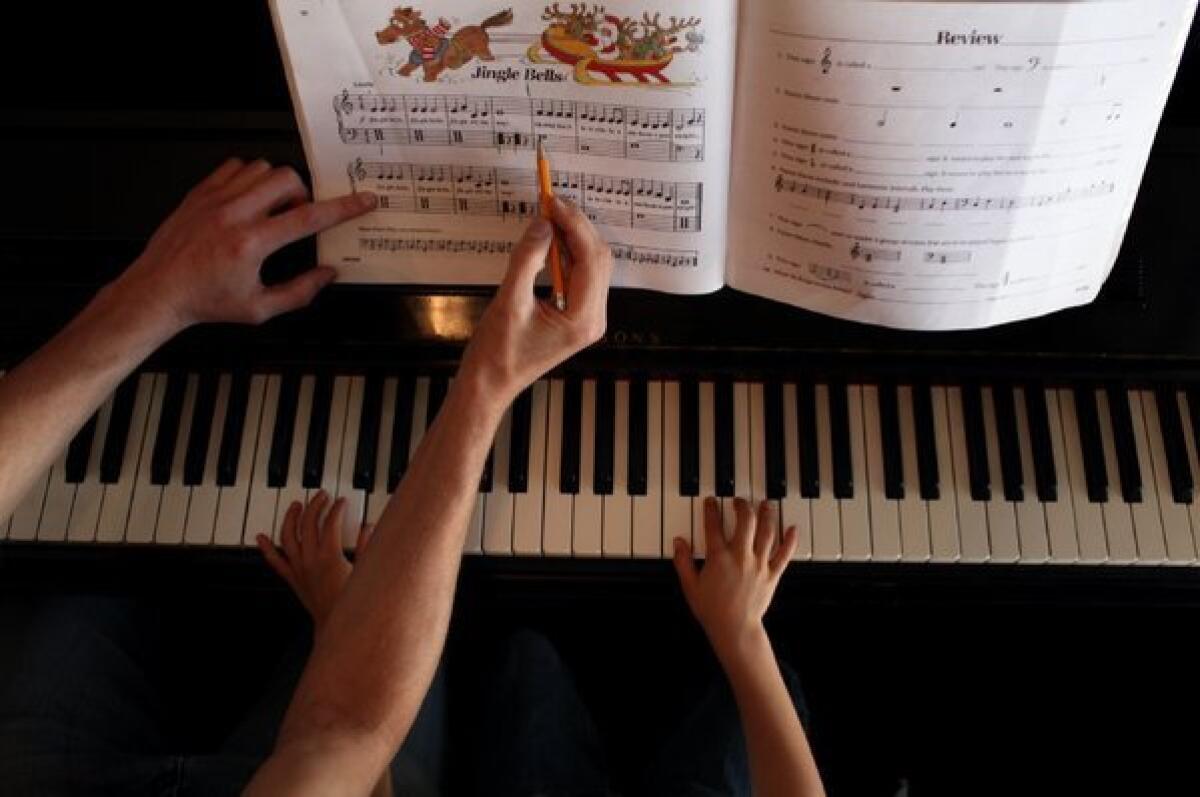Practice and sleep make for music mastery in the brain

If you can’t quite get that nine-note treble opening to “Fur Elise,” just sleep on it. The brain will rehearse, reorganize and nail the sequential motor tasks that help you play piano or type on a keyboard.
How that consolidation of memory happens has remained largely a mystery, despite telling evidence that the brain’s motor cortex appears to be quite busy during sleep. Now, a team led by Brown University neuroscientists believes it has found the source of the sleeping piano lesson, and it’s not where many expected it to be.
Neuroscience has been fixated since its founding on why the brain “needs” that peculiar mix of dormancy and random activity known as sleep. And it equally wondered why we emerge from it better able to do things. Slowly, evidence accrued that we were “learning” during sleep -- consolidating memory in ways that would make waking tasks more successful.
It seemed deepest sleep, not the familiar rapid-eye-movement type, had the most effect on our brain’s abilty to reorganize and prepare to perform better in waking hours.
“It has been very difficult to measure brain activation during sleep,” said Brown University neuroscientist Masako Tamaki, lead author of the study published online Tuesday in the Journal of Neuroscience. “So it was unclear what brain region was involved.”
Studies with electroencephalograms, which measure electrical pulses at the scalp level, had identified “spindles” of brain waves during non-REM sleep in the central area of the scalp -- roughly where the primary motor area is located.
But short-circuiting that area with magnets didn’t eliminate this improvement. That raised some suspicion about whether EEG readings were polluted with signals from a nearby area. And more importantly, it implied there was some passive memory cache outside of the primary motor area that continued to consolidate memory -- to learn the keystrokes.
Studies of piano players had already suggested that as they learn short pieces, areas targeting finger flexing and extension grew in the primary motor cortex. Other lasting changes were noted among string players who use fine sensorimotor skills to learn the subtleties of such instruments as a violin. And among all active and practicing musicians, the sensorimotor cortex is more symmetric, studies have shown.
The Brown University team used two more-precise magnetic field measures that allowed them to record real-time activity with better spatial resolution. They measured performance of a simple keyboard sequence, learned in waking hours, among nine subjects who had slept several hours, and compared results with non-sleepers. Sure enough, the results duplicated previous studies: the sleepers performed better.
Data from brain activity measurements of the subjects whose performance had improved overnight suggested the epicenter of memory consolidation was in a small zone of the motor cortex known as the supplementary motor area -- not in the primary motor area, as earlier studies had suggested.
The very name “supplementary” sounds like an extra room in a house, and it took decades of poking around the primary motor area before neuroscientists started looking in that room. There’s some suggestion that this area first helped primates climb, a task that depends on precise temporal coordination of muscle groups starting closest to the central axis of the body. In humans, the region appears to help with the sequencing and symmetry vital to planning moves.
Two particular sleep waves in the supplementary motor area appeared to have the strongest correlation with the improved keyboarding, the study found. And these were specific to deep non-REM sleep, also known as slow-wave sleep.
Further analysis suggested a kind of rewiring might be occurring within the supplementary motor area, and also between it and other parts of the cortex.
So, that haunting nine-note opening of Beethoven’s “Fur Elise” is being “memorized” in the supplemental motor area while you sleep. The “Layla” riff on the guitar fretboard? It’s working on that too.
The way to Carnegie Hall, then, is not just practice, practice practice. It’s sleep, more sleep and deep sleep.




